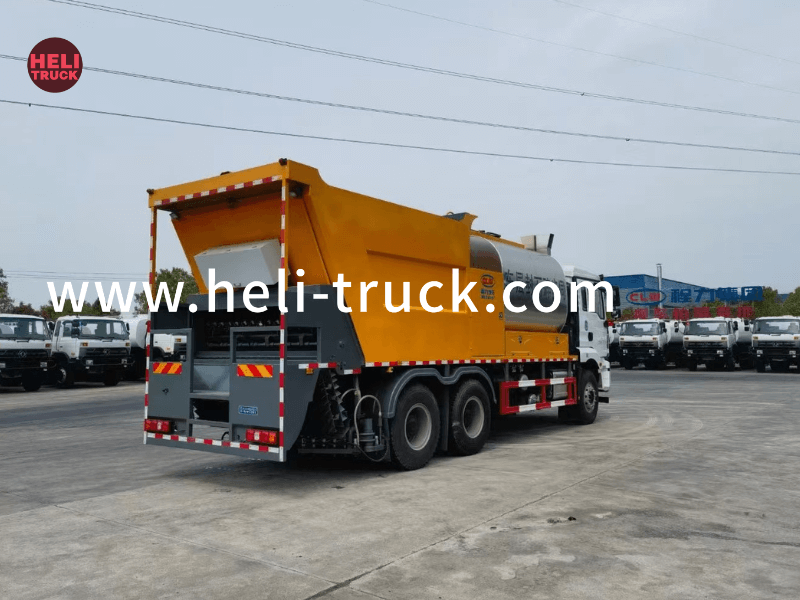Introduction
Fire trucks are essential vehicles in any firefighting operation. Equipped with a range of specialized tools and equipment, fire trucks play a crucial role in saving lives and protecting property during emergencies. In this comprehensive guide, we will explore the various types of equipment found on fire trucks, their functions, and how they are used by firefighters to combat fires effectively.
1. Water Pump and Hose
One of the most important pieces of equipment on a fire truck is the water pump and hose system. This system allows firefighters to deliver water to the fire at high pressure, enabling them to quickly extinguish flames and prevent the spread of fire to other areas. The water pump is typically powered by the fire truck's engine and can be controlled from inside the vehicle or remotely by firefighters on the ground. The hose is used to direct the water onto the fire and can be extended to reach different parts of a building or structure.

2. Ladders
Fire trucks are equipped with various types of ladders to allow firefighters to access different levels of buildings and rescue people trapped in high places. The most common types of ladders found on fire trucks include extension ladders, roof ladders, and attic ladders. Extension ladders can be raised to reach higher levels, while roof ladders are designed to provide stable footing on sloped surfaces. Attic ladders are lightweight and collapsible, making them ideal for accessing confined spaces.
3. Fire Suppression Agents
In addition to water, fire trucks may carry other fire suppression agents such as foam, dry chemical powder, or compressed air foam systems (CAFS). These agents can be used in combination with water to enhance the firefighting capabilities of the fire truck. Foam, for example, can create a blanket over the fire, cutting off its oxygen supply and smothering the flames. Dry chemical powder is effective for extinguishing certain types of fires, such as those involving flammable liquids.
4. Thermal Imaging Camera
Modern fire trucks are often equipped with thermal imaging cameras that allow firefighters to see through smoke and darkness to locate hot spots and victims inside a burning building. These cameras detect infrared radiation emitted by objects based on their temperature, providing valuable information to firefighters about the fire's intensity and the presence of any trapped individuals. Thermal imaging cameras are essential tools for improving situational awareness and making tactical decisions during firefighting operations.
5. Hydraulic Rescue Tools (Jaws of Life)
Fire trucks may also be equipped with hydraulic rescue tools, commonly known as the "Jaws of Life." These powerful tools can be used to cut through metal, glass, and other materials to extricate people trapped in vehicles or collapsed buildings. The Jaws of Life consist of hydraulic cutters, spreaders, and rams that can generate immense force to free victims from entrapment. These tools are vital for swift and efficient rescue operations in emergencies such as car accidents or building collapses.
6. Ventilation Fans
Ventilation fans are essential equipment on fire trucks that help firefighters clear smoke and toxic gases from a burning structure. By creating a flow of fresh air into the building and exhausting hot air and smoke out, ventilation fans improve visibility for firefighters and reduce the risk of smoke inhalation. Proper ventilation also helps control the fire's spread and prevents backdrafts, which can result in sudden explosions of flames due to the introduction of oxygen into a smoldering fire.
7. Portable Lighting
Firefighters often work in low-light conditions during nighttime operations or in smoke-filled environments where visibility is limited. Fire trucks are equipped with portable lighting systems, such as floodlights and scene lights, to illuminate the area and assist firefighters in their tasks. These lights can be set up around the fire scene to provide a safe working environment and ensure that firefighters can effectively carry out search and rescue operations.
8. Communication Equipment
Effective communication is crucial in firefighting operations to coordinate response efforts, relay critical information, and ensure the safety of all personnel involved. Fire trucks are equipped with advanced communication systems, including two-way radios, intercoms, and mobile data terminals, to facilitate real-time communication between firefighters, incident commanders, and dispatch centers. These systems enable firefighters to stay connected and informed throughout an operation, enhancing overall efficiency and coordination.
9. Personal Protective Equipment (PPE)
Firefighters rely on personal protective equipment (PPE) to shield themselves from the dangers of fire and other hazards present in emergency situations. Fire trucks carry a range of PPE, including fire-resistant turnout gear, helmets, boots, gloves, and self-contained breathing apparatus (SCBA). SCBA provide firefighters with a supply of breathable air in toxic environments, allowing them to operate safely in smoke-filled buildings and other hazardous conditions. Properly maintained Aerial platform truck utility applications is essential for protecting firefighters and ensuring their ability to perform their duties effectively.
10. Medical Equipment
In addition to firefighting tools, fire trucks often carry medical equipment to provide emergency medical care to victims of fires, accidents, or other disasters. This equipment may include first aid kits, automated external defibrillators (AEDs), oxygen tanks, and basic life support supplies. Firefighters are trained in basic medical procedures and can administer aid to injured individuals while waiting for paramedics to arrive on the scene. Having medical equipment on fire trucks allows firefighters to provide immediate assistance to those in need and potentially save lives in critical situations.
Conclusion
Fire truck equipment plays a vital role in the successful mitigation of fires and other emergencies. From water pumps and hoses to thermal imaging cameras and hydraulic rescue tools, each piece of equipment serves a specific function in helping firefighters carry out their duties safely and effectively. By understanding the capabilities and uses of different types of equipment on fire trucks, firefighters can be better prepared to respond to emergencies and protect lives and property in their communities.
